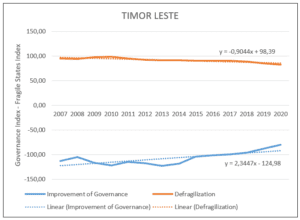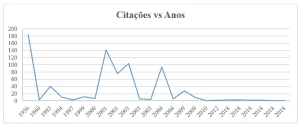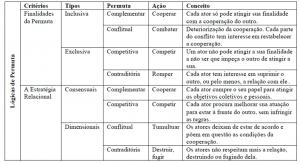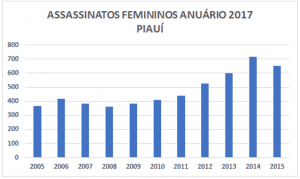ORIGINAL ARTICLE
CARDOSO, Silvia Karina Alves Barros [1]
CARDOSO, Silvia Karina Alves Barros. The main effects of implementing the Cidade Saneada Program in the historic city of Goiana – PE. Revista Científica Multidisciplinar Núcleo do Conhecimento. Year. 07, Ed. 03, Vol. 01, pp. 142-154. March 2022. ISSN: 2448-0959, Access link: https://www.nucleodoconhecimento.com.br/social-sciences/cidade-saneada-program
ABSTRACT
Basic sanitation is a fundamental right guaranteed by the 1988 Constitution, defined by Law No. 11,445 of January 5, 2007, which universalizes services such as access to drinking water, sewage collection and treatment. Goiana, a historic city on the coast of Pernambuco, is one of the oldest in the country, however, it was only in 2013 that the implementation of the Cidade Saneada Program began, through a public-private partnership between the Pernambuco Sanitation Company (Compesa)[2] and the company BRK Ambiental, with a view to implementing sewage services, recovery, maintenance and operation. Currently, the municipality still suffers from precarious conditions of basic sanitation, which justified the structuring of this study, whose general objective was to answer the following question: what are the main effects of the Cidade Saneada Program, created due to the legal framework on access basic sanitation to all municipalities? The bibliographic review and data collection were the methodological forms adopted, from which results were obtained that demonstrated that 89% of the local sewage is not collected, which negatively impacts society, the environment and the regional economy. It was concluded that the main expected effects of the Program are the implementation of sanitary sewage, the supply of potable water, increase in tourism, income generation, improvement in the quality of life and health of the population, depollution of water resources, appreciation of real estate, progress of the local economy, among other benefits that have been making the region more developed.
Keywords: Quality of life, Water supply, Sanitary sewage.
1. INTRODUCTION
Basic sanitation is the provision of public services for the distribution of treated water, sewage collection and treatment, urban cleaning and solid waste management, drainage and management of urban rainwater in order to prevent diseases, promote the health and quality of population’s life (PORTAL DO SANEAMENTO BÁSICO, 2018).
In Brazil, basic sanitation is everyone’s right guaranteed by the Constitution and defined by Law nº 11,445, of January 5, 2007, one of its fundamental principles being the universalization of sanitation services, so that people have access to drinking water, collection and treatment of sewage and solid waste and management of rainwater (BRASIL, 2007).
Despite basic sanitation being a right guaranteed by law, almost 35 million people do not have access to treated water, and almost 100 million do not have access to the sewage system (TRATA BRASIL, 2021). This reality is experienced in many Brazilian municipalities, including Goiana, a city located in the state of Pernambuco.
Goiana is one of the oldest cities in the country and, only from 2013 onwards, the implementation of basic sanitation work in the region began, through the initiative of BRK Ambiental, which is a private company (COMPESA, 2020). Therefore, there is a need to find out what are the main effects of implementing the Cidade Saneada Program, created as a result of the Sanitation Legal Framework (2020), prepared by the federal government, on access to basic sanitation by Brazilian municipalities.
The municipality of Goiana is a reference in the world automobile industry, and consummating access to basic sanitation in the region will benefit the population, providing them with better quality of life and health. In addition, basic sanitation works contribute to the sustainable development of the state of Pernambuco.
Investing in basic sanitation is a factor that protects the quality of life, and its absence compromises, among others, social well-being and public health. With that in mind, this research is justified by the finding that, even with the beginning of the sanitary implementation process, in which several families have already benefited, the municipality is still in a precarious situation in this regard and the population, as a whole, wait for these solutions.
Therefore, the general objective of this study is to answer the following question: what are the main effects of the Cidade Saneada Program, created as a result of the legal framework on access to basic sanitation in all municipalities? Based on the findings, the objective is to contribute to the emergence of new questions and increase the database related to the subject.
Specifically, it is intended to conceptualize basic sanitation and quality of life; demonstrate the importance of basic sanitation for Goiana; analyze the impacts of the lack of basic sanitation on the quality of life of the population and identify the main effects of the Program.
To this end, bibliographical research and data collection are the methods adopted for collecting and gathering information taken from electronic books, scientific articles, specific laws and official websites that deal with the subject, relating them to each other.
Initially, the study addresses the conceptual issue followed by the presentation of the local social impacts generated by the lack of basic sanitation, demonstrating, afterwards, the importance of basic sanitation for Goiana and the identification and prediction of the main effects of the implementation of the Cidade Saneada Program.
2. THE CITY OF GOIANA – PE AND BASIC SANITATION
Initially, it is necessary to address, in an analytical and integrated way, the concepts of basic sanitation and quality of life portrayed by Law nº 11,445 (BRASIL, 2007) and the Sanitation Legal Framework (2020), with the presentation of the impacts caused by the lack of of these services, their importance and the effects of the implementation, in Goiana, of the Cidade Saneada Program, created as a result of the Legal Framework that proposes access to basic sanitation for all Brazilian municipalities.
2.1 BASIC SANITATION AND QUALITY OF LIFE
Basic sanitation is the set of services that includes the supply of treated water and the collection and treatment of sewage. These are the main sanitation services and have the objective of protecting and modifying adverse environmental conditions to prevent diseases from reaching society, and should promote health and a better quality of life for the population (TRATA BRASIL, 2021).
Quality of life, according to the World Health Organization (WHO), involves two contexts: culture and values based on how people live, as well as aspects related to their goals, expectations, standards and concerns. It also involves social relationships, spirituality, physical, mental, psychological and emotional well-being. In addition, quality of life means protecting health, valuing education, guaranteeing housing, basic sanitary conditions and the integrity of other living environments (ALMEIDA; GUTIERREZ; MARQUES, 2012).
Thus, the quality of life is not only related to the health of the individual, but to this whole set of essential conditions for the population and to which everyone has the right to access, and basic sanitation is one of the main and most important (PORTAL DO SANEAMENTO BÁSICO, 2018).
Law No. 11,445 determines the procedures for basic sanitation in municipalities and, in Article 9, specifies that the person responsible for services will prepare the public policy for basic sanitation with the obligation to prepare the respective plans. In addition, it must monitor, regularize and communicate services, address all economic, social and technical points of service provision, as well as institute participation and social control (BRASIL, 2007).
On July 16, 2020, the Sanitation Legal Framework, sanctioned by President Jair Messias Bolsonaro, entered into force, with the aim of ensuring 99% of the supply of treated water and 90% of sewage treatment and collection services for the Brazilian population until December 31, 2033, reducing the release of in natura effluent into rivers and seas (PEREIRA, 2020).
With the Sanitation Legal Framework (2020), Law No. 14,026 of July 15, 2020 was created, which amends seven important laws, including Law No. 11,445 of 2007. These changes occurred with a view to equating existing bottlenecks in sanitation legislation basic, and which refer mainly to low investments in the sanitation sector, the need for regulation by municipalities, greater legal certainty, strengthening the quality of supervision, reducing transaction costs, rationalizing more resources, combating losses and attracting of private investment.
The purpose of changing such laws is to achieve the goal desired by the government and benefit municipalities that do not have access to treated water supply or sewage treatment and collection. The initiative, in addition to being a big step taken by the government, is challenging and, with collaboration between federated and public entities, it has everything to succeed and reach the goal proposed by the aforementioned Legal Framework.
2.2 IMPACTS OF THE LACK OF BASIC SANITATION ON THE QUALITY OF LIFE OF THE POPULATION OF GOIANA
There is a great deficiency in basic sanitation services in Brazil (LEONETI; PRADO; OLIVEIRA, 2011). The problem causes several impacts for Brazilian municipalities, and for the region of Goiana-PE.
Pernambuco is a state where the sewage collection rate is 72.3%, which in numbers represents 6.7 million people who do not have access to the service. In this scenario, Goiana is one of the Pernambuco cities with the worst indexes. According to the National Sanitation Information Service (SNIS)[3], Goiana has 89% of the population without sewage collection (PORTAL TRATAMENTO DE ÁGUA, 2019).
Generally, sewage that is not properly collected is released in natura into water bodies, contributing to the pollution of rivers and streams and leading to the appearance of disease-causing vectors. The underprivileged population comes into contact with these vectors and is affected by diseases such as dysentery, giardiasis, amoebiasis, gastroenteritis, leptospirosis, bubonic plague, cholera, poliomyelitis, infectious hepatitis, typhoid fever, malaria, Ebola and measles (PORTAL DO SANEAMENTO BÁSICO, 2018).
The lack of basic sanitation, therefore, causes impacts on health and affects the quality of life of the population due to the appearance of these and other diseases. In 2018, in Pernambuco, 7,653 hospitalizations were recorded due to diseases related to lack of sanitation and 89 people died from gastrointestinal diseases caused by the lack of sanitary sewage and sewage collection (TRATA BRASIL, 2021).
A study was carried out in Goiana, in which it was found that access to treated water for consumption is uneven. Although there is a large amount of water resources available and the great potential of the municipality is considered, the opportunities for obtaining these resources are quite unequal (LYRA; BEZERRA; ALBUQUERQUE; 2015).
Instituto Trata Brasil presented a study based on information from the Brazilian Institute of Geography and Statistics – IBGE’s[4] Family Budget Survey (POF)[5], in the period from 2008 to 2018, in which 65% of families are connected to the supply network, however, in addition to irregularities, it was also identified that a considerable part of the population seeks other solutions, such as the drilling of wells and the use of spring water without any treatment.
The lack of sanitation also causes several environmental problems, including the pollution of rivers and seas, due to sewage discharge in natura. Furthermore, the emergence of diseases as a result of this situation also generates public health problems and avoidable public spending (BRK AMBIENTAL, 2019). In this sense, it was found that the lack of sanitation in Goiana generates social, environmental and economic impacts. However, the problem affects the population more, as it harms their health and reduces people’s life prospects.
2.3 IMPORTANCE OF BASIC SANITATION IN GOIANA
Basic sanitation is of great importance for Goiana, taking into account that this service is directly linked to the development of the city, environmental preservation, health and quality of life of the population. In addition, the implementation of sanitary sewage in the city, among other sanitation services, will benefit the local population in the medium and long term (COMPESA, 2019).
Likewise, basic sanitation, when fully implemented, will be beneficial for the growth of the municipality. Drinking water, sewage collection and treatment services will increase people’s life prospects, especially health, reducing child mortality, improving education, making investments in tourism more interesting, valuing city real estate, increasing income and employment and the conservation of natural resources (TRATA BRASIL, 2021).
The lack of sewage collection and treatment, in addition to causing diseases, causes the dissemination of repulsive odors and makes the local appearance unpleasant. The Program will make the city more attractive and valued, drawing the attention of people and companies, guaranteeing citizens that sewage is collected and treated and no longer released in natura into rivers or streams.
Basic sanitation services provide social, economic and environmental benefits, and thus achieve environmental sustainability. By making the city more pleasant and organized, tourism can be promoted, generating more jobs and income for the inhabitants, reducing health expenses and contributing to the local economy.
There are many benefits that basic sanitation can provide for the region. However, in order to guarantee a healthy environment for everyone, the participation and collaboration of the population is necessary: the disposal of solid waste in suitable places is essential, because when accumulated or discarded in inappropriate places, it leads to infestation by vectors that threaten the citizens’ health.
In drainage systems, waste can cause blockages and, consequently, floods. In rivers, its concentration promotes water pollution and imbalance of aquatic life. In open-air land, they contaminate the soil and groundwater, in addition to emitting toxic gases into the atmosphere (QUEIROZ; MARAFON, 2016).
2.4 MAIN EFFECTS OF THE IMPLEMENTATION OF THE CIDADE SANEADA PROGRAM IN THE IMPROVEMENT OF THE QUALITY OF LIFE OF THE POPULATION OF GOIANA
Goiana is a municipality that is home to important industrial, automotive, pharmaceutical, chemical and sugarcane parks. The region has resorts that are often visited by tourists and, with its integration with the Metropolitan Region of Recife (RMR)[6], it will receive treated water supply services, sewage collection and treatment, making the city much more valued and targeted by other states (COMPESA, 2019).
The city has a historical problem with regard to the lack of basic sanitation. However, the implementation of the Cidade Saneada Program will solve the disability, which is a very old issue in the municipality (COMPESA, 2019). The investment exceeds 83 million reais and will reach 42,000 people, covering 62% of the municipality (PORTAL TRATAMENTO DE ÁGUA, 2019).
The main goals are: to implement and expand sewage treatment, universalize RMR’s sewage treatment services and maintain all sewage treatment systems until they are operational. Within the period determined by the Program, which is until 2037, the plan will increase the rate of sewage collection and treatment in the planned area from the current 37% to 90%, benefiting 6 million people. The first phase of the Cidade Saneada Program focuses on the restoration and modernization of all existing business units, and is now in a tangible phase of works, being implemented in several cities in RMR and Goiana (COMPESA, 2020).
The Program consists of seven stages from implementation to universalization, with Goiana included in the first stage of the process. The initiative will provide the city with an increase from 11% to 50% of the sewage network, with an investment of 300 million reais, to reach 90% of sanitation services. In addition, the project aims at implementing sewage collection networks, building three elevated stations and one sewage treatment plant, with the potential to treat 82,000 liters of effluents per second (COMPESA, 2020).
The first initiative took place in 2020, with the implementation of a new sanitary sewage treatment system in the Ponta de Pedras region, increasing the percentage of coverage in the municipality from 0% to 11%. In this first phase of the project in the city, approximately 10 million reais were invested, including the construction of a sewage treatment station, two pumping stations and the implementation of a 20,000-meter sewage collection network, which benefited the neighborhoods of Cocota, Enseada, center of Ponta de Pedras, Beira Mar, Sítio Area, Santa Cruz and Malvinas subdivisions.
In the second phase, the work will reach the center of the city, ending in 2022. In this stage, the investment will be 105 million reais and will serve approximately 35 thousand inhabitants (BRK AMBIENTAL, 2019; COMPESA, 2019).
The installation of the sewage system in Goiana is a fundamental and challenging initiative for the state government. Compesa and its private alliance with BRK Ambiental have a very important task for the municipality, which is to further boost the city’s development through the quality of services in environmental matters, and to improve the lives of residents, as all treated effluents will be returned to nature, obeying the strict quality standards and environmental norms in force (COMPESA, 2020).
Finally, the Cidade Saneada Program will provide, until the deadline for its total implementation, in addition to benefits with basic sanitation, health and quality of life services, the promotion of the sustainable development of the city and the region, making it well-being seen by society, and raise awareness among the local population about the protection and preservation of water resources and the environment.
3. FINAL CONSIDERATIONS
As you can see, Goiana is a historic city with important industrial, automotive, pharmaceutical, chemical, sugarcane and beach resorts that are much visited by tourists. However, there is a major deficiency in basic sanitation services, as 89% of sewage is neither collected nor treated, which causes serious problems for the region.
Basic sanitation is of great importance for the health and quality of life of the population and its lack generates negative impacts on society, the environment and the economy. In view of this, the federal government approved, in 2020, the Sanitation Legal Framework, with the aim of reaching Brazilian municipalities that do not have access to the service, and the city of Goiana-PE is among them.
Based on this scenario, an attempt was made to answer the question: what are the main effects of the Cidade Saneada Program, created as a result of the legal framework on access to basic sanitation in all municipalities? It is possible to conclude that the public-private partnership between the company BRK and the concessionaire Compesa generated an investment of more than 83 million reais, which will benefit 42 thousand people and will cover 62% of the municipality of Goiana, through the implementation and expansion of the sewage , universalization of sewage treatment services in the metropolitan region of Recife and maintenance until the operation of all sewage treatment systems. The current area covered by the Program is 37% and, within the foreseen period, which extends until 2037, it will make it possible to increase the sewage collection and treatment rate to 90%, which will directly benefit 6 million people in the region’s municipalities.
The Program, composed of seven stages of implementation, inserted Goiana in the first stage of the process, and provides the city with an increase from 11% to 50% of the sanitary sewage network, with the implementation of sewage collection networks, construction of three elevated stations and one for sewage treatment, with the potential to treat 82,000 liters of effluents per second.
In 2020, the implementation of a new sanitary sewage treatment system in the Ponta de Pedras region increased coverage in the municipality from 0% to 11%, when approximately 10 million reais were invested, and the construction of a sewage treatment plant sewage, two pumping stations and the implementation of a 20,000-meter sewage collection network, which benefited the neighborhoods of Cocota, Enseada, the center of Ponta de Pedras, Beira Mar, Área do Sítio, Loteamentos Santa Cruz and Malvinas.
Still in the first half of 2022, the work should reach the city center and the investment, at this stage, will be 105 million reais, to serve around 35 thousand inhabitants.
Therefore, from the information and data collected during the study, it was verified that, with the changes in the basic sanitation laws, Goiana has been benefiting from several positive effects: the creation of the Cidade Saneada Program, with the beginning of the implementation of sewage sanitation, supply of treated water, increase in tourism, generation of income and employment, improvement of the quality of life and health of the population, process of depollution of rivers and water resources, appreciation of real estate, growth of the local economy, among other benefits that will make the most developed and valued region by 2037.
REFERENCES
ALMEIDA, Marcos Antonio Bettine de; GUTIERREZ, Gustavo Luis; MARQUES, Renato. Qualidade de vida: definição, conceitos e interfaces com outras áreas de pesquisa. São Paulo: Escola de Artes, Ciências e Humanidades – EACH/USP, 2012. p.142. Disponível em: http:/www.each.usp.br/edicoeseach/qualidade_vida.pdf. Acesso em: 19 mar. 2021.
BRASIL. Lei nº 11.445, de 5 de janeiro de 2007. Estabelece diretrizes nacionais para o saneamento básico; altera as Leis nos 6.766, de 19 de dezembro de 1979, 8.036, de 11 de maio de 1990, 8.666, de 21 de junho de 1993, 8.987, de 13 de fevereiro de 1995; revoga a Lei no 6.528, de 11 de maio de 1978; e dá outras providências. Brasília, DF: Presidência da República, 2007. Disponível em: http://www.planalto.gov.br/ccivil_03/_ato2007-2010/2007/lei/L11445compilado.htm. Acesso em: 18 mar. 2021.
BRASIL. Lei nº 14.026, de 15 de julho de 2020. Atualiza o Marco Legal do Saneamento básico e altera a Lei nº 9.984, de 17 de julho de 2000 […] Brasília, DF: Presidência da República, 2020. Disponível em: http://www.planalto.gov.br/ccivil_03/_ato2019-2022/2020/lei/l14026.htm. Acesso em: 22 mar. 2021.
BRK AMBIENTAL. Mais de R$ 83 milhões serão investidos para implantação de sistemas de esgotamento sanitário no município de Goiana. BRK Ambiental, São Lourenço da Mata, 15 fev. 2019. Disponível em: https://www.brkambiental.com.br/pernambuco/sao-lourenco-da-mata/mais-de-r-83-milhoes-serao-investidos-para-implantacao-de-sistemas-de-esgotamento-sanitario-no-municipio-de-goiana. Acesso em: 20 mar. 2021.
COMPANHIA PERNAMBUCANA DE SANEAMENTO. Iniciada obra de esgotamento sanitário na Praia de Ponta de Pedras e centro de Goiana. Compesa, Recife, 12 mar. 2019. Disponível em: https://servicos.compesa.com.br/iniciada-obra-de-esgotamento-sanitario-na-praia-de-ponta-de-pedras-e-centro-de-goiana/. Acesso em: 22 mar. 2021.
COMPANHIA PERNAMBUCANA DE SANEAMENTO. Paulo Câmara entrega obra de saneamento básico em Goiana. Compesa, Recife, 2 out. 2020. Disponível em: https://servicos.compesa.com.br/paulo-camara-entrega-obra-de-saneamento-basico-em-goiana/. Acesso em: 18 mar. 2021.
LEONETI, Alexandre Bevilacqua; PRADO, Eliana Leão do; OLIVEIRA, Sonia Valle Walter Borges de. Saneamento básico no Brasil: considerações sobre investimentos e sustentabilidade para o século XXI. Revista de Administração Pública, Rio de Janeiro, v. 45, n. 2, p. 331-348, mar./abr. 2011.
LYRA, Tereza Maciel; BEZERRA, Anselmo César Vasconcelos; ALBUQUERQUE, Maria do Socorro Veloso de. Os desafios dos Polos de Desenvolvimento na perspectiva dos atores sociais locais de Goiana, Pernambuco. Physis: Revista de Saúde Coletiva, Rio de Janeiro, v. 25, p. 1117-1139, out./dez. 2015.
PORTAL DO SANEAMENTO BÁSICO. Saneamento Básico. 2018. Disponível em: https://saneamentobasico.com.br/saneamento-basico/. Acesso em: 18 mar. 2021.
PORTAL DO TRATAMENTO DE ÁGUA. O esgoto é um problema para as cidades pernambucanas. Portal do tratamento de água, São Paulo, 3 jun. 2019. Disponível em: https://tratamentodeagua.com.br/esgoto-cidades-pernambucanas/. Acesso em: 10 mar. 2021.
QUEIROZ, Humberto Alves de; MARAFON, Gláucio José. Os caminhos do lixo na cidade do Rio de Janeiro. Disponível em: https://www.academia.edu/59537883/Os_caminhos_do_lixo_na_cidade_do_Rio_de_Janeiro. Acesso em: 08 fev. 2022.
SENADO FEDERAL. Brasil tem 48% da população sem coleta de esgoto, diz Instituto Trata Brasil. Agência Senado, Brasília, DF, 25 set. 2019. Disponível em: https://www12.senado.leg.br/noticias/materias/2019/09/25/brasil-tem-48-da-populacao-sem-coleta-de-esgoto-diz-instituto-trata-brasil. Acesso em: 22 mar. 2021.
TRATA BRASIL. Orientações para o PMSB de Pernambuco. Disponível em: file:///C:/Users/rebec/Downloads/Orienta%C3%A7%C3%B5es%20para%20o%20PMSB%20de%20Pernambuco%20(4).pdf. Acesso em: 18 mar. 2021.
APPENDIX – FOOTNOTE
2. Companhia Pernambucana de Saneamento (Compesa).
3. Serviço Nacional de Informações sobre Saneamento (SNIS).
4. Instituto Brasileiro de Geografia e Estatistica (IBGE).
5. Pesquisa de Orçamento Familiar (POF).
6. Região Metropolitana de Recife (RMR).
[1] Postgraduate in Public Administration, Centro Universitário Cesumar – UniCesumar. Graduated in Public Management, Centro Universitário Cesumar – UniCesumar. Graduated in History, Universidade do Estado de Pernambuco – UPE. ORCID: 0000-0003-4598-5272.
Shipped: April, 2021.
Approved: March, 2022.




